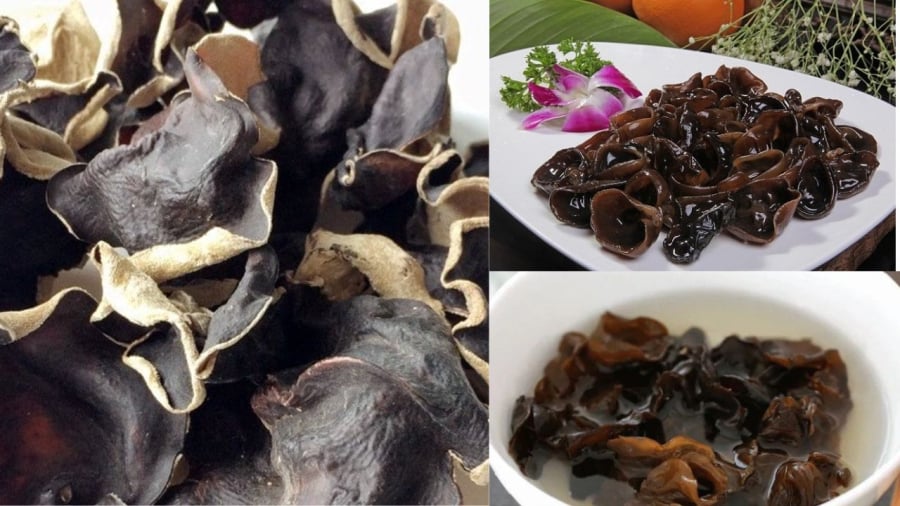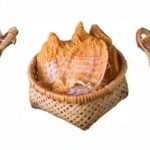Soaking Dried Bamboo Shoots, Wood Ear, and Mushrooms: A Necessary Step for More Than Just Rehydration
Soaking dried bamboo shoots, wood ear, and mushrooms is not just about rehydration.
It is common practice to soak these dried ingredients in water to rehydrate them, but there is more to this process than meets the eye. Soaking also serves the important purpose of removing impurities and potential toxins, making them safer and more delicious to consume.
Soaking dried bamboo shoots the right way for a tastier and safer dish.
Dried bamboo shoots have a unique aroma and flavor that sets them apart from their fresh counterparts. However, they can contain traces of naturally occurring cyanide, as well as dust and sulfur added during processing for color enhancement and mold prevention. Soaking dried bamboo shoots is essential to remove these toxins, ensuring they don’t turn tough or bitter during cooking.

Here’s how to properly soak dried bamboo shoots:
– Start by rinsing the bamboo shoots under running water to remove any surface dirt. For best results, use rice water instead of plain water, as it is more effective at drawing out toxins, making the bamboo shoots less bitter and safer to consume. Soak the shoots overnight in rice water, then rinse and repeat the process with fresh water.
– After soaking, it is crucial to blanch the bamboo shoots. During blanching, keep the lid off to allow any remaining impurities to escape with the steam.
– Finally, soak the blanched bamboo shoots in clean water once more, giving them a final rinse before cooking. It is recommended to keep the lid off during cooking as well.
Soaking wood ear to achieve the right texture without sacrificing crispness.
Wood ear is prized for its unique crunchy texture. However, improper soaking can compromise this desirable trait. Additionally, wood ear naturally contains a light-sensitive toxin that can cause itching if consumed in significant quantities. While drying under sunlight breaks down most of this toxin, traces may still remain. Wood ear also tends to harbor dust and debris from its growing medium.

Here’s the recommended soaking method for wood ear:
– Rinse the wood ear thoroughly under running water.
– Prepare a soaking solution by mixing water, salt, and baking soda. Soaking wood ear in this solution helps it rehydrate while retaining its crisp texture.
– For faster rehydration, use warm water, but avoid boiling water, as it can make the wood ear slimy and mushy.
– Adding a small amount of flour to the soaking water can help draw out any remaining impurities, resulting in cleaner wood ear.
Soaking mushrooms to achieve uniform rehydration without losing their distinctive aroma.
Mushrooms are renowned for their intense, natural aroma, which enhances the flavor of dishes. When soaking mushrooms, the goal is to rehydrate them evenly while preserving their distinctive fragrance. Improper soaking can lead to mushy mushrooms that have lost their appealing aroma.
Here’s what to keep in mind when soaking mushrooms:
– Rinse the mushrooms thoroughly under running water to remove any dirt or debris, paying close attention to the base of the stems.
– Use warm water at approximately 40 degrees Celsius, and add a small amount of sugar to the water. Sugar helps the mushrooms absorb water more effectively, ensuring even rehydration while preserving their aroma and preventing them from disintegrating.
Dried bamboo shoots, wood ear, and mushrooms are integral ingredients in many Vietnamese dishes. Properly preparing and soaking these ingredients is key to unlocking their full potential and ensuring a delightful culinary experience.
The Ultimate Guide to Dried Bamboo Shoots, Wood Ear and Shiitake Mushrooms: Beyond Soaking in Cold Water
Dried bamboo shoots, wood ear mushrooms, and shiitake mushrooms are staple ingredients in many cuisines, but preparing them to perfection is an art. The secret to unlocking their delicious potential lies in knowing the right soaking techniques. With the proper methods, these humble ingredients can be transformed into culinary masterpieces, adding a burst of flavor and texture to your dishes.































